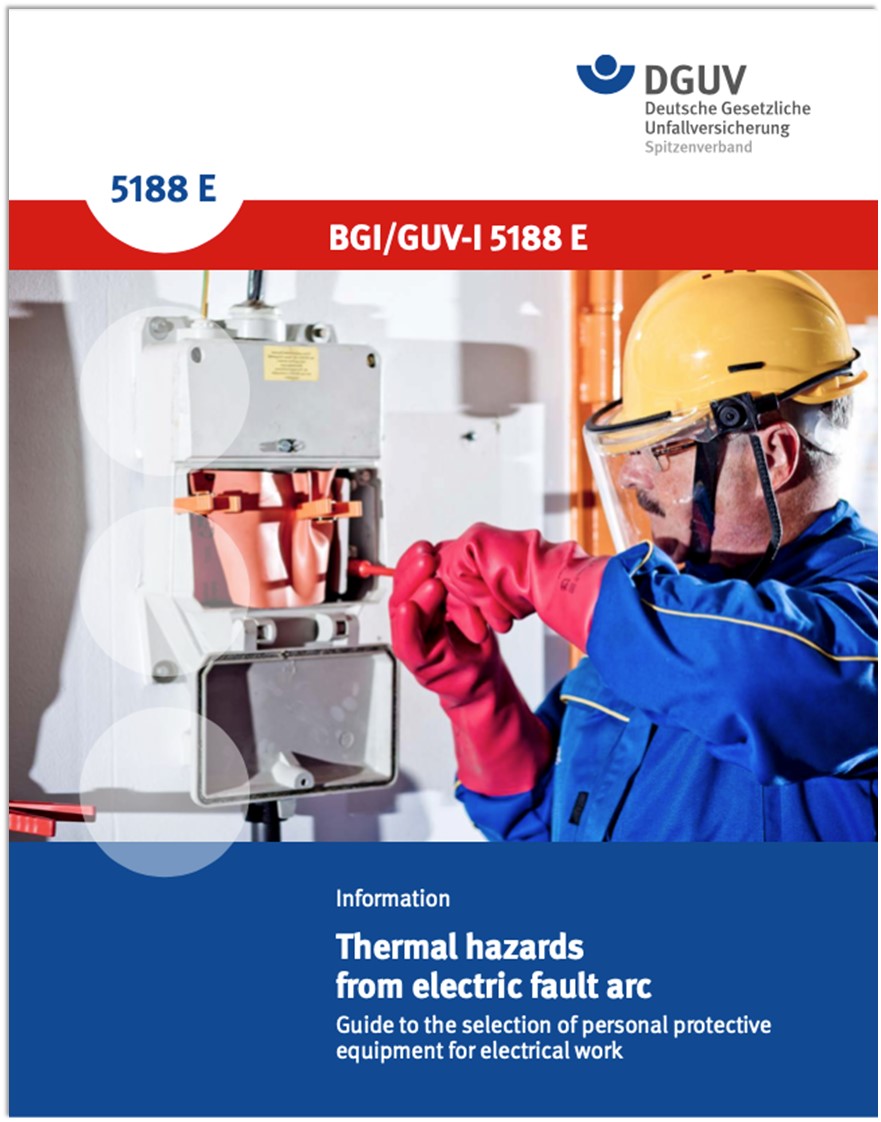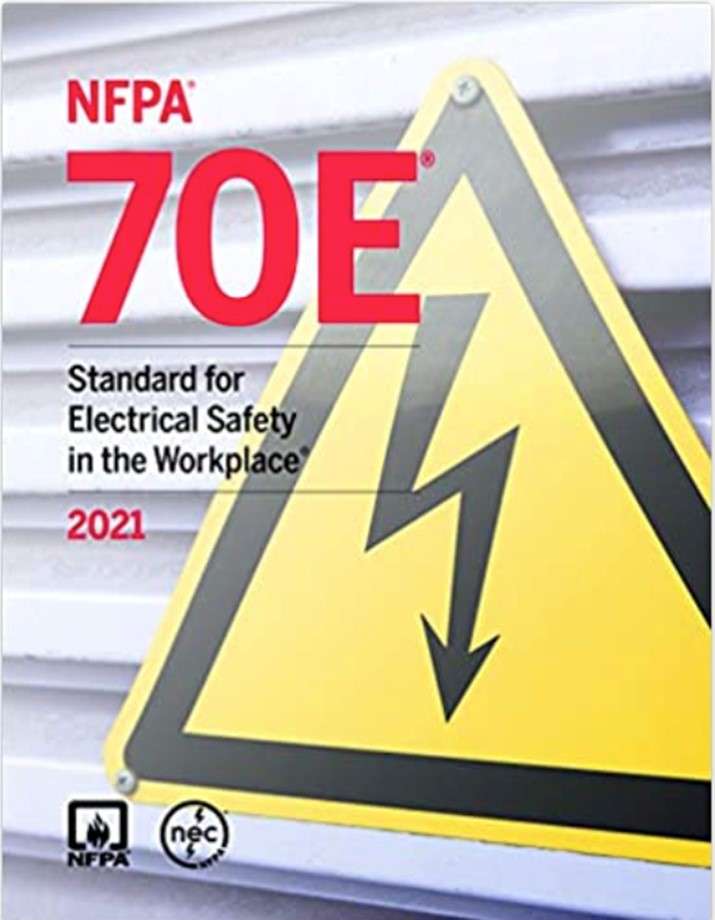16.8 DGUV -I- 203-5188 E Guide to the Selection of Personal Protective Equipment.

The DGUV-I 203-5188 E Guide to the Selection of Personal Protective Equipment for Electrical Work has been developed and used in Germany for the section of Arc Rated Personal Protective Equipment. DGUV is the German Social Accident Insurance Institution which is the national, compulsory program that insures workers for injuries or illness incurred through their employment.
At the core of the guide, is an algorithm that has been derived from the standard IEC 61482-1-2:2014, Method 2: Determination of arc protection class of material and clothing by using a constrained and directed arc (box test). This testing method for PPE is described in Chapter 7: Protection. The information provides guidance for the appraisal of potential thermal hazards due to electric fault arcs associated with electrotechnical work on electrical equipment. Accordingly, the document affords employers an element of support in the selection of essential PPE and is applicable for work performed on or in the vicinity of electrical equipment greater than 50 V AC. (Note that there is a new version of the guide that has been published but in German only. This gives an upper limit of 110kV and also has a section on DC calculations up to 1500 volts)
Whilst the document is describing the algorithm as a European method, this is not the case for industrial and commercial installations where the IEEE 1584 Guide for Performing Arc Flash Hazard Calculations is more appropriate.
*BGI/GUV-I 5188 E available from the German Social Accident Insurance Institution or on https://publikationen.dguv.de/dguv/udt_dguv_main.aspx
16.9 NFPA 70E Standard for Electrical Safety in the Workplace

*NFPA 70E requirements for safe work practices to protect personnel by reducing exposure to major electrical hazards. As described by the National Fire Prevention Association of America, the scope of the standard addresses electrical safety-related work practices, safety-related maintenance requirements and other administrative controls for employee workplaces that are necessary for the practical safeguarding of employees relative to the hazards associated with electrical energy during activities such as the installation, inspection, operation, maintenance, and demolition of electric conductors, electric equipment, signalling and communications conductors and equipment and raceways. NFPA 70 E was created in 1979 at the request of the US Occupational Safety and Health Administration and as a result, even though it is a consensus standard, can be said to have a quasi-legal standing in the United States of America.
The standard is formally reviewed every three years and I have seen how it has evolved from hazard protection to risk prevention. In fact, it has at its heart, elimination as a first principle. It can appear to be a big document at first glance but actually the main chapter (1) on safety related work practices is only 19 pages long. This covers all the general requirements, establishing an electrically safe work condition and work involving electrical hazards including arc flash. The rest of the document includes maintenance, special equipment and 17 informative annexes.
There are a lot of positive attributes but there has got to be some caution and explanation when mentioning the standard. In the UK we do not have standards for rules (except at high voltage) and some of the NFPA 70E requirements may contradict HSE guidance. For example, NFPA 70E has requirements for live working electrical permits. In the UK this may risk an improvement notice as electrical permits must never be used for live work. Requirements for warning labels will be at odds with UK norms through the signs and signals legislation. That said, where I have had US owned clients in Europe, I have been successful in steering a course between a head office requirement to impose NFPA 70E into overseas operations and the local regulatory requirements.
*The NFPA 70E Standard for Electrical Safety in the Workplace is available from https://www.nfpa.org/codes-and-standards/all-codes-and-standards/list-of-codes-and-standards/detail?code=70E